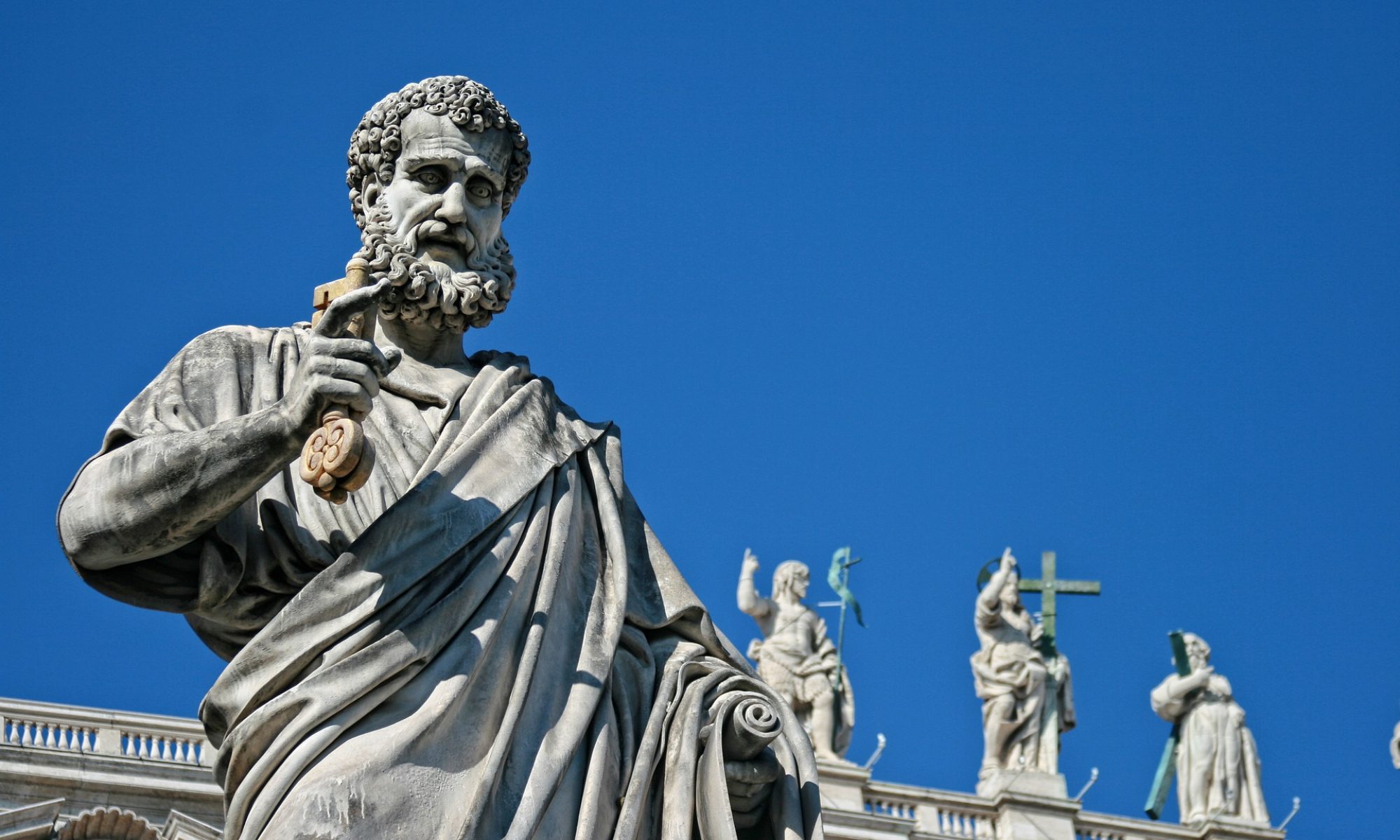January 29th, 2014
“Has Christ been divided?” This is the question that Paul rhetorically asks to the Corinthians (1 Corinthians 1:13), and this is also the question that Pope Francis commented upon in his homily at the end of the Week of Prayer for Christian Unity at the Basilica of St. Paul Outside the Walls in Rome. His brief meditation shows the passion that is a defining mark of the present pontificate, but it also restates important aspects of the traditional Roman Catholic view of unity that has been expounded since Vatican II.
A Given and a Goal
The first remark has to do with the understanding of unity as a “goal”. In commenting on the developments of the ecumenical movement, he speaks of “journeying together on the road towards unity,” implying the idea that unity stands ahead of us as if it were a goal to be eventually reached. Unity is therefore in the future tense. What does exactly unity mean here and why is it in the future tense? Later on, the Pope makes a comment that sheds light on these issues. He refers to the prospect of “restoration of full visible unity among all Christians” as the future climax of the ecumenical path. There is need, however, to unpack such a statement.
Firstly there is the idea of “restoration.” According to this view, there was a time in the life of the church when full and visible unity existed. It is not explicitly stated here, but what is perhaps referred to is the “undivided” First Millennium of the church before the East-West Schism (1054 AD) and the Protestant Reformation of the XVI century. This view is common in ecumenical circles but highly problematic from both historical and theological points of view. From its very early years and on, the church has constantly been dealing with inner divisions and conflicts, as the Pauline text testifies to. Before there was a Pope and even after the papacy came into existence, a “golden age” of Christian unity never existed, even within the Roman Catholic Church itself! Unity always stands in tension and under attack. Rather than restoring unity, the Bible urges us to “maintain” the already given unity (Ephesians 4:3) and to equip the body of Christ in order to “attain” the unity of faith (4:13). In other words, from the beginning of the church, unity is both a given and a goal. It is a gift and a task. The restoration model wrongly implies that unity was full in the first stages of the church and was then lost along the way, and now needs to be recovered. Christian unity is instead a given reality amongst those whom the Father has given to the Son (John 17:9) that must be protected and lived out.
Secondly, the Pope makes reference to a “full” and “visible” unity as the goal of ecumenism. According to the Roman Catholic view, “full” means sacramentally full, i.e. same baptism, same eucharist, same ministry. Given the self-understanding of the Roman Church, it means adhering and submitting to the sacramental theology of Rome and the hierarchical nature of its priesthood. “Visible” means that unity needs to accept the visible Papal structure of the Roman Catholic Church as the divinely appointed way for the One Church of Christ. The ecumenical price for full and visible unity is the acceptance of the Roman Catholic view of the Church. All other views are defective and, in the end, partial and invisible.
Prayer to Paul?
In closing his homily, Pope Francis reports that he had previously visited Paul’s tomb in the Basilica with other Christian leaders and they exhorted one another with these words: “Let us pray that he (Paul) will help us on this path as we advance towards unity”. Is Paul really the one to pray to for the advance of unity? Is he really in the position to help? Here again, another fundamental obstacle towards unity arises. According to the Pope, Paul can be prayed to, but the same Paul that taught us about unity was the one that wrote: “I bow my knees before the Father” (Ephesians 3:15). The restoration of Gospel purity and the keeping of Christian unity (as a gift and a task) belong together. Paul was the great apostle of the Gentiles and pointed out the Triune God as the model for our unity (Ephesians 4). We should not seek Paul’s help beyond what God inspired him to write in his letters.
